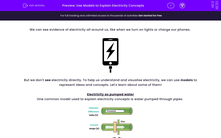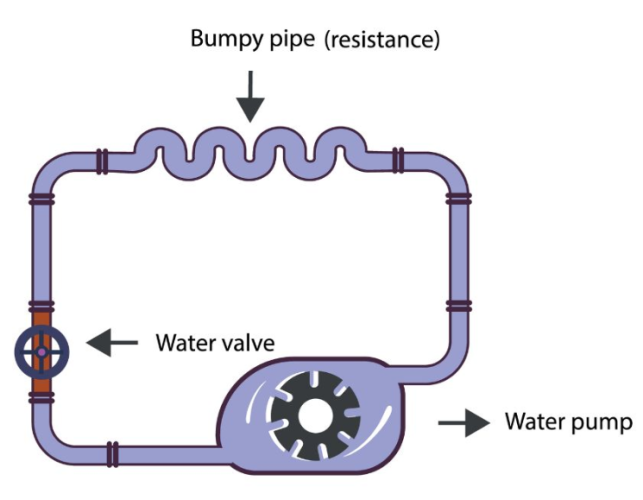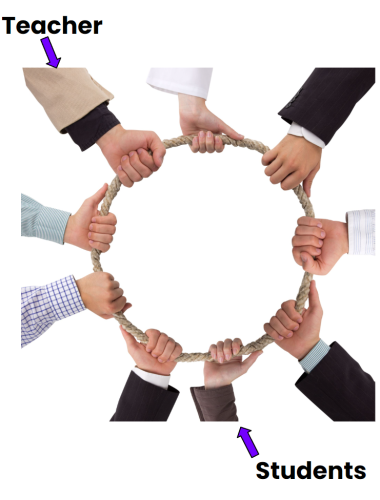We can see evidence of electricity all around us, like when we turn on lights or charge our phones.
![]()
But we don't see electricity directly. To help us understand and visualise electricity, we can use models to represent ideas and concepts. Let's learn about some of them!
Electricity as pumped water
One common model used to explain electricity concepts is water pumped through pipes.
Potential difference tells us the amount of energy being transferred in a circuit. We can imagine that the pressure in the pipes represents this idea. The greater the pressure, the more energy is transferred in the water - there is a greater 'push'.
Current tells us how many charge carriers (electrons) are being transferred in a given time. The more electrons, and the faster they move, the bigger the current. We can imagine that the width of the pipes represents the current. A wider pipe allows more water to flow, more quickly.
Resistance tells us how difficult it is for current to flow in a circuit. The greater the resistance, the lower the current. We can imagine that tying and narrowing the pipe represents the resistance. If you narrow and restrict a pipe, it's more difficult for the water to flow.
Here is a similar model.
Here, the water pump represents the battery in a circuit. The bumpy pipe represents areas in the circuit with a higher resistance.
The water valve can be turned off and on - this represents a switch.
Electricity as a held rope
This model of electricity helps us to understand the concepts of current and resistance. Imagine a teacher and a group of students standing in a circle, holding a rope.
The teacher represents the battery. They provide the energy and start moving the rope around the circle, at a constant speed.
Imagine that the students are holding the rope gently. In this case, the rope will move smoothly and all parts of the rope will move at the same speed. This represents the constant current in a series circuit.
Now, what if the students grip the rope a little harder? Now they are behaving like components with resistance. This slows down the movement of the rope - this models the fact that increased resistance reduces the current in the circuit.

As the rope moves through their hands, the friction causes the students' hands to warm up. This also models what happens in circuits - components with resistance, such as bulbs, get warmer when current flows through them.
Electricity as a distribution system
In this model, we imagine a factory producing flour. The factory sends the flour to a bakery, using trucks. The trucks unload the flour and return to the factory. There, they can collect more flour and repeat the process.
The factory represents the battery. The factory produces flour, just like a battery transfers electrical energy. The flour is carried by trucks - the trucks represent the electrons. The roads are the wires. The bakery is a component in the circuit, such as a resistor or a bulb. It uses up the electrical energy (flour), and the empty trucks return to the factory.
Let's try some practice questions!












